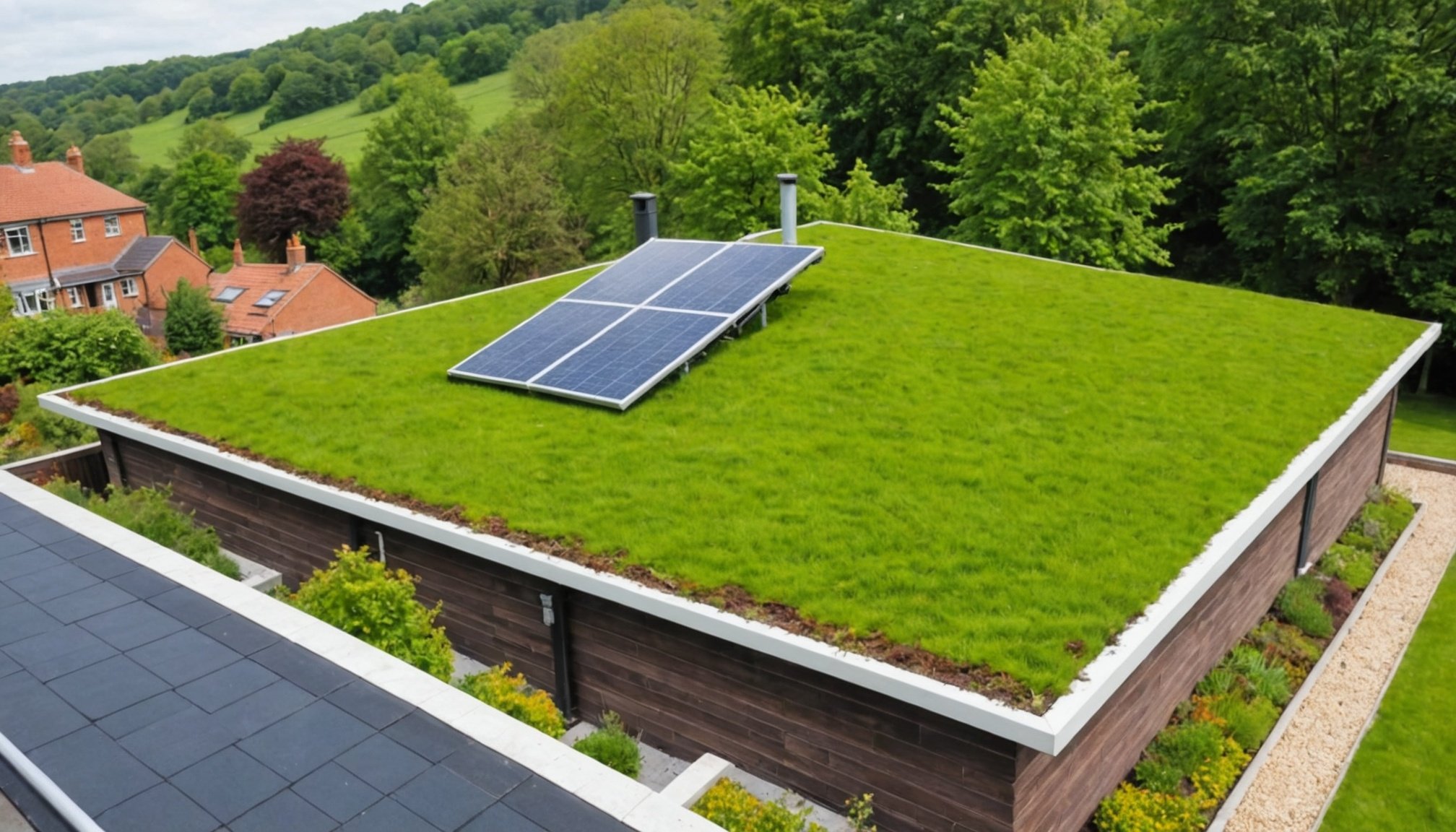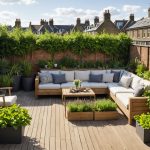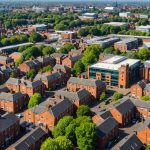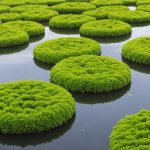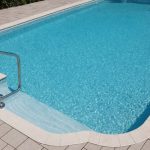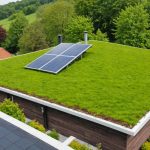Are you seeking an eco-friendly upgrade for your home? Consider a green roof, a unique solution that not only enhances energy efficiency but also supports urban biodiversity. These living roofs can bring significant benefits, including reduced heating and cooling costs, improved air quality, and even stormwater management. Discover how transforming your roof can make your home a greener haven while contributing positively to the environment. Dive deeper into the practical advantages and considerations of this sustainable choice.
Understanding Green Roofs
A green roof is a roof that is partially or entirely covered with vegetation, growing in a specially designed medium. There are two primary types: extensive and intensive. Extensive green roofs are lighter, needing less maintenance, and generally feature drought-resistant plants. Intensive green roofs are more like regular gardens, containing a variety of plants and requiring more upkeep.
Sujet a lire : What are the challenges of restoring a Grade II listed building in Bath?
Green Roof Benefits
Adopting green roofs is an eco-friendly solution with numerous benefits. They significantly improve energy efficiency by providing natural insulation, reducing the need for artificial heating and cooling. This can lead to noticeable savings in energy costs.
Contribution to Urban Biodiversity and Air Quality
Green roofs considerably enhance urban biodiversity by offering habitats for various insect and bird species, thus fostering a balanced ecosystem midst concrete jungles. Additionally, these roofs substantially improve air quality by absorbing pollutants and producing oxygen. Not only do they mitigate the urban heat island effect, but they also play a vital role in managing stormwater, reducing runoff by absorbing rainwater. Consequently, green roofs present a multifaceted solution to urban environmental challenges, balancing architectural innovation with positive ecological impacts.
Avez-vous vu cela : How do school catchment areas impact property prices in Birmingham?
Energy Efficiency Advantages
Green roofs, beyond their aesthetic appeal, offer remarkable energy savings by providing natural thermal insulation. This additional layer moderates building temperatures, reducing the need for artificial heating and cooling. In practical terms, these installations can lead to significant cuts in energy bills.
The vegetation and substrate layers of a green roof act as a natural barrier, trapping air and thereby maintaining more consistent indoor temperatures. During summer, they shield buildings from intense solar radiation, while in winter, they help retain indoor heat. As a result, both heating and cooling systems experience less strain, which translates into lower heating and cooling costs.
By reducing reliance on artificial temperature regulation, green roofs significantly impact overall home energy consumption. For environmentally conscious homeowners seeking sustainable solutions, green roofs provide an effective means of enhancing building efficiency. With urban areas facing increasing energy demands, integrating green roofs can contribute to a broader strategy for energy savings.
For those considering installation, it is prudent to assess potential energy reductions against installation costs. Such considerations ensure that you make an informed decision fitting both your energy savings goals and budgetary constraints.
Installation Considerations
Deciding to install a green roof involves several key considerations. A comprehensive structural assessment is paramount. Evaluate whether your building can support the additional weight of soil, plants, and water. Structural reinforcements might be necessary, especially in older buildings that weren’t initially designed to accommodate green roof loads. Consulting with a structural engineer ensures that any potential modifications are identified and appropriately conducted.
In the UK climate, selecting the right plants is crucial for a successful installation. Opt for species that thrive in temperate weather, endure both wet and dry periods, and require minimal irrigation. Sedum, native wildflowers, and some grasses have proven effective in the UK environment. Pair your plant choices with the appropriate drainage and water retention systems to protect your green roof and ensure plant vitality.
Post-installation maintenance can be overlooked, but it is essential to uphold the ecological and aesthetic benefits of the system. Regular upkeep includes checking drainage systems, removing debris, and monitoring plant health. Establishing these maintenance practices ensures the sustainability of your green roof, maintaining its ecological benefits and aesthetic appeal.
Cost Implications
Exploring the cost implications of green roofs involves understanding various financial dynamics. The initial installation costs of green roofs can be substantial, often ranging between £100 to £250 per square metre in the UK. However, this initial expenditure is offset by long-term savings. Factors such as reduced energy bills, enhanced roof lifespan, and rainwater management efficiencies contribute to these savings.
When considering the return on investment, it's important to note that green roofs often lower energy costs by providing natural insulation. This can reduce heating and cooling requirements, translating to significant savings over time. Additionally, green roof costs are also influenced by factors like roof size, design complexity, and plant selection.
In the UK, financial incentives and grants can further ease the financial burden. Various schemes are available to encourage the adoption of sustainable roofing solutions. These initiatives can cover a portion of the installation costs or provide tax rebates, enhancing the appeal of green roofs.
Overall, while the upfront costs may seem daunting, the long-term economic benefits combined with potential financial support make green roofs an attractive investment for environmentally and financially conscious property owners.
Environmental Impacts
Understanding the environmental impacts of green roofs is crucial in today's sustainability-focused world. These structures play a pivotal role in addressing the Urban Heat Island Effect, a phenomenon where urban areas become significantly warmer than their rural surroundings. By adding a layer of vegetation, green roofs help absorb sunlight, reducing heat buildup and aiding in temperature regulation.
Additionally, green roofs contribute to effective water management by absorbing rainwater, thus minimizing stormwater runoff. This ability not only reduces the risk of flooding in urban areas but also alleviates pressure on drainage systems. This means fewer pollutants wash into our waterways, supporting a healthier, more sustainable urban ecosystem.
Moreover, green roofs provide a haven for biodiversity by fostering habitats for various species. Birds, insects, and even plants benefit from these green spaces, which can mimic natural environments. For urban planners and homeowners alike, green roofs emerge as a solution-oriented approach to fostering environmental sustainability.
With further adoption of these eco-friendly coverings, cities can expect to see improvements in urban living conditions, making them a central pillar in the pursuit of a more sustainable and balanced urban future.
Case Studies and Successful Implementations
In exploring green roof success stories, notable examples in the UK stand out. Projects like the Barking Riverside and Eden Project have led the way in showcasing the potential benefits of green roofing. These projects have demonstrated a decrease in energy usage and an enhancement of local biodiversity, becoming key references in the field.
Considerations from these case studies offer insights into the energy savings achieved. For instance, the reduction of heat flux due to the insulating properties of green roofs contributes significantly to energy efficiency. This means less reliance on air conditioning, resulting in notable cost savings for building owners over time. In addition to energy savings, these projects highlight environmental benefits such as improved stormwater management and urban air quality.
Through these success stories, several best practices emerge. Prioritising native plant species ensures minimal maintenance while enhancing local ecosystems. Furthermore, integrating a diverse array of plants provides maximum environmental gain and resilience against weather extremes.
The lessons learned emphasise the importance of careful planning and design, including considerations on load-bearing capacity and irrigation systems, to maximise the effectiveness of green roofs. These implementations serve as vital blueprints for future projects aiming to harness the multiple benefits of green roofing.

